CiONE BiOFASCIAL RELEASE
Understanding the BiOFascial Release…
It is a ‘hands-on’ process that releases the deeper tensions within the muscle groups releasing the impingements of the neurology within the multi layers of the fascia.
Myofascial spasms – (named after Thomas Myo the medic who studied the connection between ‘trauma’ and the Vagus nerve) – is a result of the body being out of control and the brain’s proprioception believing that the body is about to suffer either a ‘life threatening’ moment or an intense, physical/emotional trauma.
On the firing of the Vagus nerve a deep connective tissue/fascia spasm occurs releasing an ‘Opiate’ or an ‘Adrenaline Rush’ – into the body, restricting the body from the inside out…through minimising the ‘range of motion’ of the dynamic ‘global’ muscle groups.
What is Fascia?
A clear definition and concept of fascia is important when attempting to relate anatomical and biomechanical studies. A consistent theme in the established anatomical literature concerning the definition of fascia is epitomised in the English and American versions of Henry Gray’s historical anatomy text.
Essentially, fascia is generally defined by these resources as connective tissue composed of irregularly arranged collagen fibers, distinctly unlike the regularly arranged collagen fibres seen in tendons, ligaments or aponeurotic sheets.
The irregular arrangement of collagen fibres allows fascia to fulfil a role as packing tissue and resist tensional forces universally. Thus, fascia, as so defined, with its irregular weave of collagenous fibres is best suited to withstand stress in multiple directions.
How does Fascia Interact with the Musculo-Skeletal System?
To stabilize the lumbar vertebrae on the sacral base requires the assistance of a complex myofascial and aponeurotic girdle surrounding the torso (Bergmark, 1989; Cholewicki et al. 1997; Willard, 2007).
On the posterior body wall, the central point of this girdling structure is the thoracolumbar fascia (TLF), a blending of aponeurotic and fascial planes that forms the retinaculum around the paraspinal muscles of the lower back and sacral region (Singer, 1935; Romanes, 1981; Clemente, 1985; Vleeming & Willard, 2010; Schuenke et al. 2012).
Muscular forces are transmitted through associated endo- and epimysial connective tissue matrices into the surrounding skeletal system via ligaments, tendons and aponeuroses.
Moments and reaction forces generated by muscles and their associated passive structures combine to provide equilibrium at the multiple degrees of freedom of the lumbar spine and sacroiliac joints.
A critical part of the TLF is the myofascial girdle that surrounds the lower portion of the torso, playing an important role in posture, load transfer and respiration of the body.
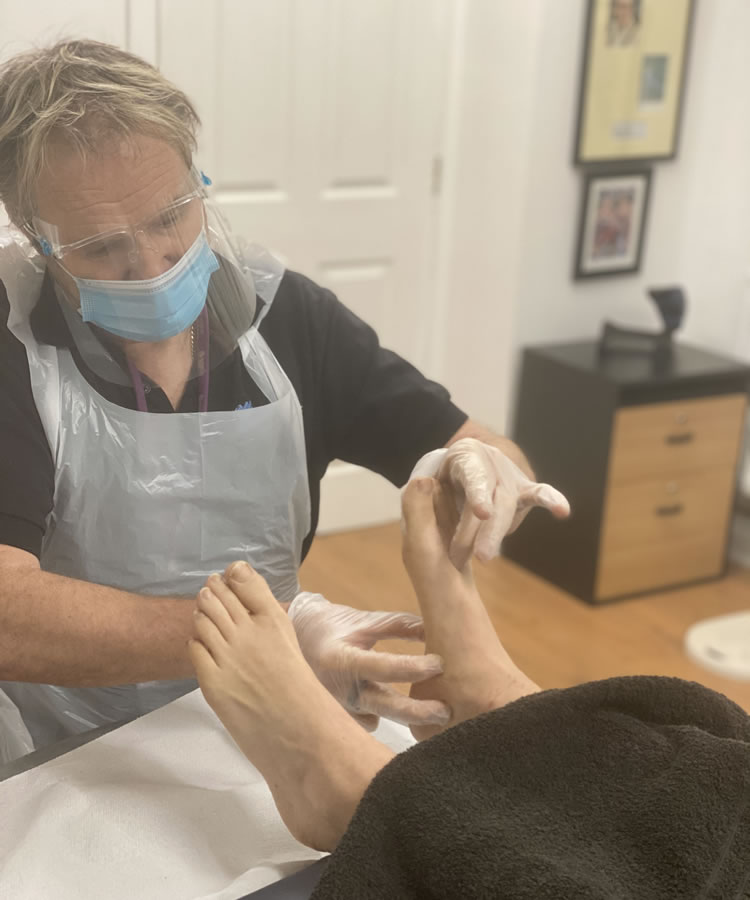
AMATSU THERAPY
What is Amatsu and what are CiONE BiOPelvic and BiO Fascial Releases?
CiONE has utilised and evolved the ancient traditional Amatsu therapy since 1992, when the founder Tim King, spent time in Japan, learning about the techniques and the “Amatsu Philosophy” and realised that he could utilise the therapy to release deep connective tissues spasms and blocked negative energy, through a gentle relaxing technique – which offers no pain and leaves the body in a calm relaxed state with little or no anxiety for a good 5-6 weeks.
CiONE BiOPelvic and BiOFascial releases were evolved from this ancient therapy, by the founder of CiONE embracing a triangular approach of combining ‘Ancient Japan’ with modern Biomechanics principles of skeletal realignment, alongside the Western philosophy of ‘triggering’ – used by many Physiotherapists around the world.
Deep Myo-fascial spasms occur through “Trauma” and are a direct reaction to the Vagus Nerve firing within the body – effecting the Pelvic Girdle, Lower Lumbar and the dynamic intrinsic muscles such as the Glute Medius, Minimus, Piriformis, and Gemellus Inferior and Superior.
A series of ‘mini traumas’ can occur during a person’s life, during growth and throughout adulthood, instigated by the firing of the ‘Vagus nerve’ as the brain feels that the body is threatened ‘pro-prioceptively’.
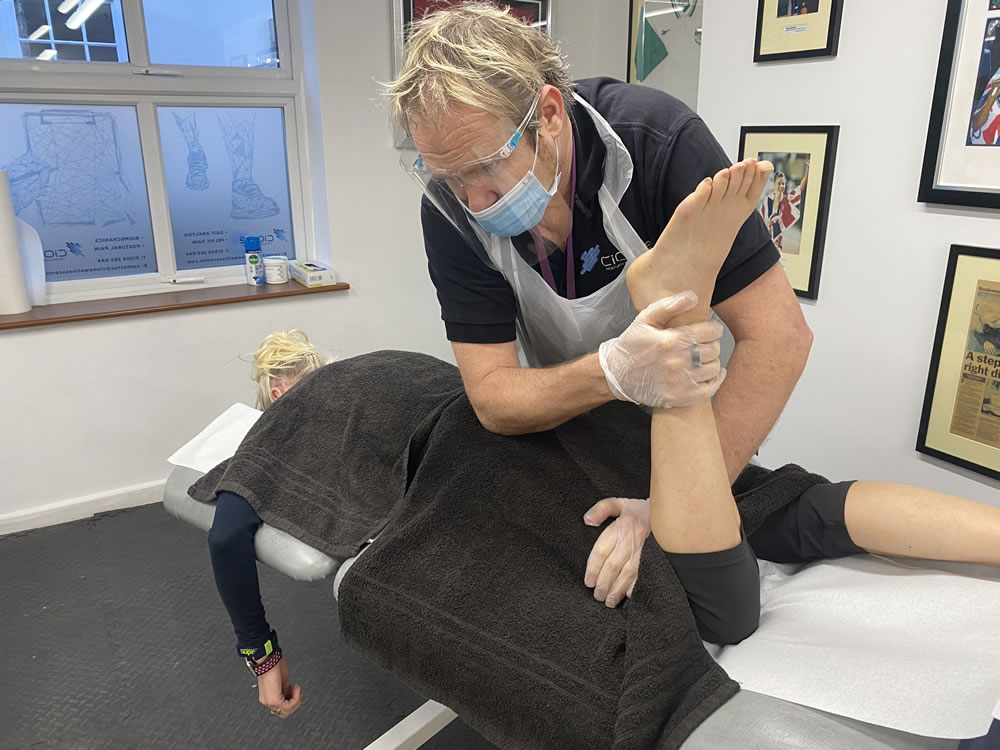
The Vagus nerve is part of the parasympathetic nervous system, referred to as the ‘rest and digest system’. It’s not the only nerve in the parasympathetic system, but it’s by far the most important one because it has the most far reaching effects.
The word Vagus means “wanderer,” because it wanders all over the body to various important organs.
The Vagus Nerve is commonly known as; our ‘survival nerve’ and ‘kicks into action’ when the brain feels that the physical body is threatened “fatally”, by releasing chemicals to either numb the potential impact or offer ‘super’ strength to escape from the danger. Ie creating a ‘freeze’ or ‘flight/fight’ mode.
In modern-day environments, humans tend to override their instinctive natures and try to deflect the ‘trauma’ that they experience, through managing the situation practically, an example of this would be a minor traffic incident.
In this scenario, there is always a powerful adrenaline rush, and rather than allowing the body’s nervous systems to express and release this energy; we usually concern ourselves instead, with the practicalities of the event, such as exchanging addresses, calling the insurance company and then more often than not, hurrying back to work!
It is this ‘override’ management process, that causes the brain to feel ‘spaced out’ and in a state of ‘shock’, post incident.
Indeed, this ‘survival’ energy in its ‘fight’ or ‘flight’ mode – can be enormously powerful ie; allowing a mother to lift a car to save her toddler from being trapped underneath, or give the victim of a physical attack, the ‘super’ strength to break away and run faster than ever before, to escape.
‘Freeze’ mode is the only other choice for the brain and this is often experienced as a numbing or a form of shock/dissociation with the body from the mind.
The ‘freeze’ mode of the ‘survival energy’ – is just as enormous as the ‘Fight’ or ‘Flight’ mode, but in a different way ie; as the brain realises that the trauma is about to happen, and that it is inevitable and damaging – it will release a form of ‘Opiate’ into the body, to numb and relax the musculoskeletal structure in an effort to protect the body/brain from the impact and the pain…
Interestingly, in any one of these ‘survival’ modes – if the energy is not released – it can remain trapped inside the body and mind, and stay and persist for years, causing a variety and wide range of debilitating symptoms.
Indeed, the firing of the Vagus nerve causes a connective tissue spasm from within the body – which in turn shortens the ROM of the intrinsic muscle groups – which then in turn shortens the ROM of the Global muscle groups ie; the body tightens up from the ‘inside out’.
If the body then suffers a series, or a multiple of, ‘mini trauma’s then the ROM of the muscle groups become compounded and then, (if the body’s own mobility/flexibility cannot manage it), causes the physical body to gradually or suddenly go into a full ‘shut down’ – where all Lower limb and Lower/Upper back muscles spasm and the body locks and freezes completely.
It is also important to understand that an excessive dysfunctional skeleton i.e; Plantar flexed posture, anterior tilted and/or torsionally twisted pelvis; causes dynamic restrictions that effect and exacerbate these deep Myofascial spasms.
How to Treat the Myofascial Spasm
The physical body becomes tranquil with all tensions eradicated, creating a feeling of calm, inner peace and euphoria.
The reconnection of the inner deeper energy of the physical body to the right side of the proprioceptive brain, causing a deactivating of the Vagus nerve. This nerve as we know effects the parasympathetic elements of the nervous system, ie; ‘rest and digest’ system; so the Amatsu ‘unblocking’ technique effecting the physical body and the Vagus nerve, in the manner that it does – creates the deep inner calming, which can last for 5-6 weeks.
This ‘unblocking’ thus ensures the release of the tension within all muscle groups, both Global and Intrinsic, but importantly – in regard to the Myofascial spasms – the Gluteus Maximus becomes loose and ‘fluid’ allowing the deeper intrinsic dynamic muscle groups, (Glute Medius, Minimus, Piriformis, Gemellus Inferior and Gemellus Superior) – to be treated effectively, through the BiOFascial or BiOPelvic releases.
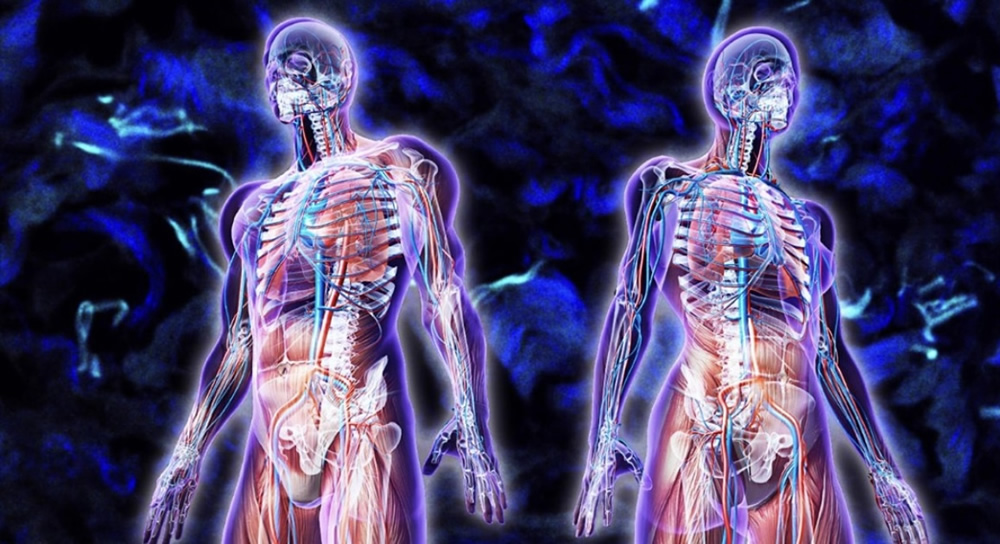
The ‘origins of pain’ – the Myofascial Trains within the Meridian lines/points of the body
CiONE BiOFascial Releases – for general Postural Pain and dysfunctions…
The Amatsu approach evolved by the founder to manage Postural dysfunction and the Myofascial spasms, (which can stretch sometimes from the foot, up the lower limb, crossing the Sacroilliac Joint and travelling up the opposite side of the upper torso – stopping at the proprioceptive balance point ie; ear drum) – is known as a ‘Dynamic BiOFascial release’.
The unblocking techniques of Amatsu, relaxes the Sensitive Somatic Tissue and the layers of Fascia, allowing the BiOFascial release technique to be successful during a short ‘period of time’ ie: one long ‘out breath’.
Dynamic Myofascial trains – needing the “Dynamic BiOFascial release”
The BiOFascial ‘de-spasming’, effects the dynamic deeper intrinsic muscle groups, instantaneously releasing the tension within the lower and upper thoracic back, as well as the upper and lower limbs. The relaxing of the muscles and tensions/restrictions caught up with the Myofascial spasms – eradicates the referring pain.
The BiOFascial release combines a basic 1st Tier ‘Amatsu’, which involves the placement of the hands/fingers on specific meridian points and meridian lines, that in turn affect the Fascia of the muscles forcing the skin/fascia and muscle tensions to become fluid and relaxed (Glute maximus becomes relaxed and soft within 3 minutes), once done the Biomechanics therapy (BiOFascial) and Physiotherapy ‘triggering’ techniques – combine to create the effect that is needed.
What are we releasing?
Apart from one of the 5 x intrinsic muscle groups being in spasm, the brain also releases ‘Paniculosis’ to protect the nerve endings, into the Fascia, in an attempt to stop the ‘trauma’ that is occurring from damaging the physical body.
Therefore, the BiOFascial release, once done – allows these fluid balls to be ‘chased’ and ‘eradicated’ though the Amatsu channeling.
Indeed, it is through the multi layering and the neurology sitting within the Fascia, and the need for the nerves to ‘slide and glide’ to stay healthy – that the damage prevention can be achieved by the brain, through the secretion of the microscopic fluid (Paniculosis).
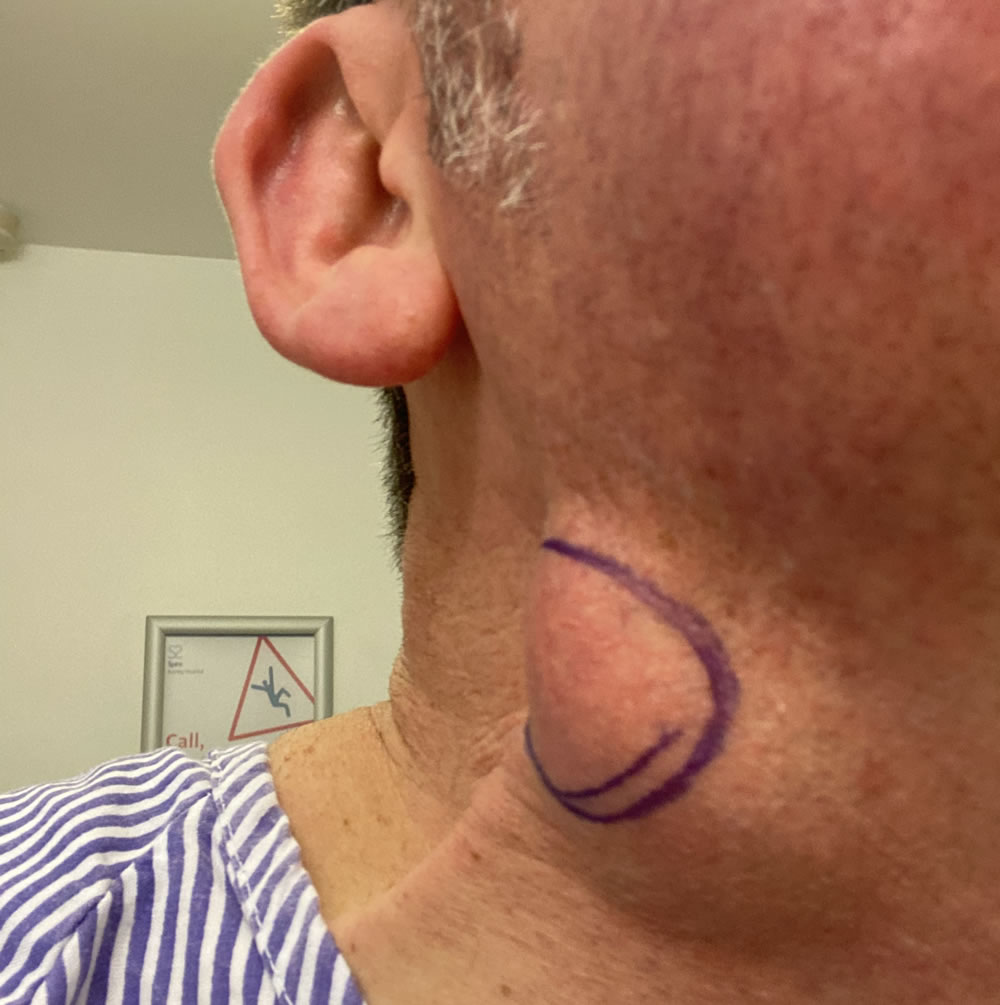
Lump Prior To Surgery
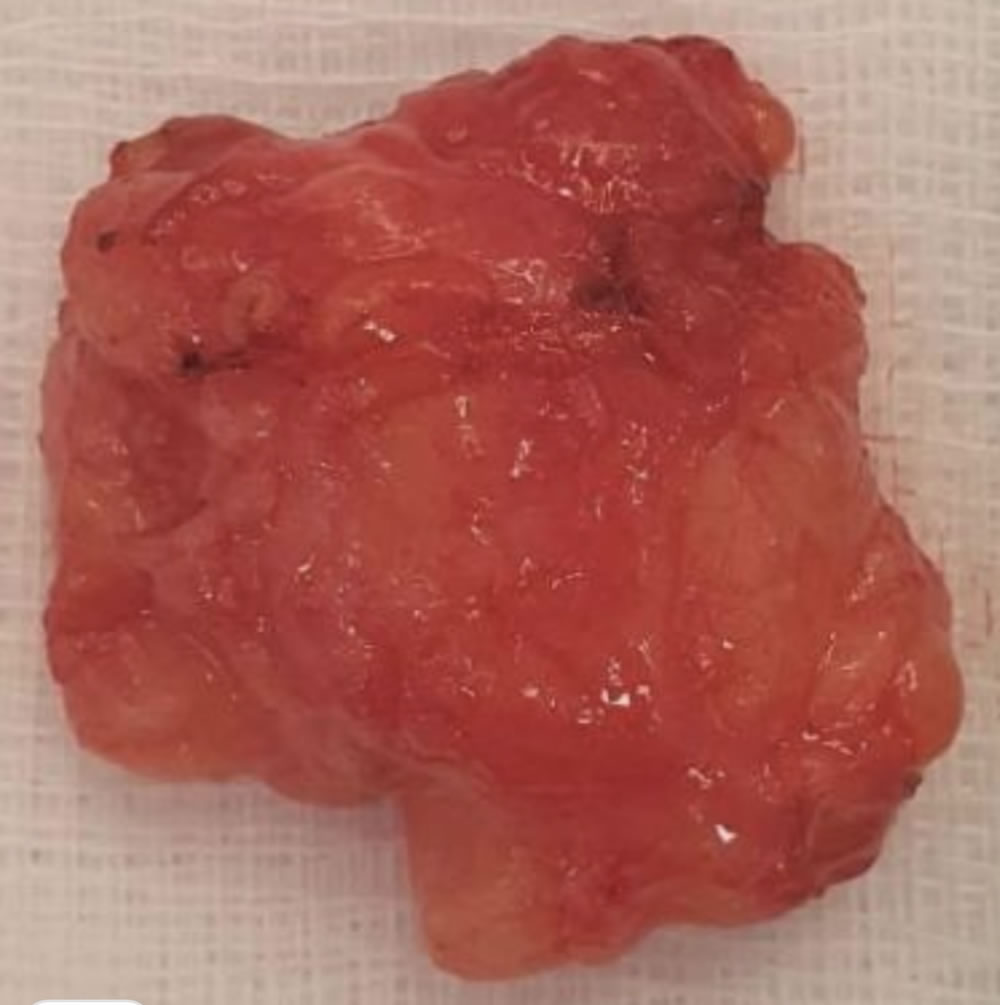
Removed Paniculosis Fluid
Therefore, the secretion manages to ‘stick the fascia’, stopping the ‘slide and glide’ element of the mechanism, which then in turn causes the inflammation and pain, to shut the physical body down.
In this case within the Dynamic Muscles of the Glute Maximus, Medius and Minimus etc, the fluid balls can grow to a large size, within the multi layers of the fascia and we have experienced over the years fluid build-up, as large as a ‘golf ball’ and sometimes (more rarely) bigger (see above).
A recent CiONE patient had surgery due to many years of a build-up of ‘Paniculosis’ in the Abdomen.
This will involve the CiONE “BiOFascial” techniques, which are complex, in that the technique of “Traditional Amatsu” – supersedes the ‘simple’ therapy and massage techniques used in the general Amatsu therapy.
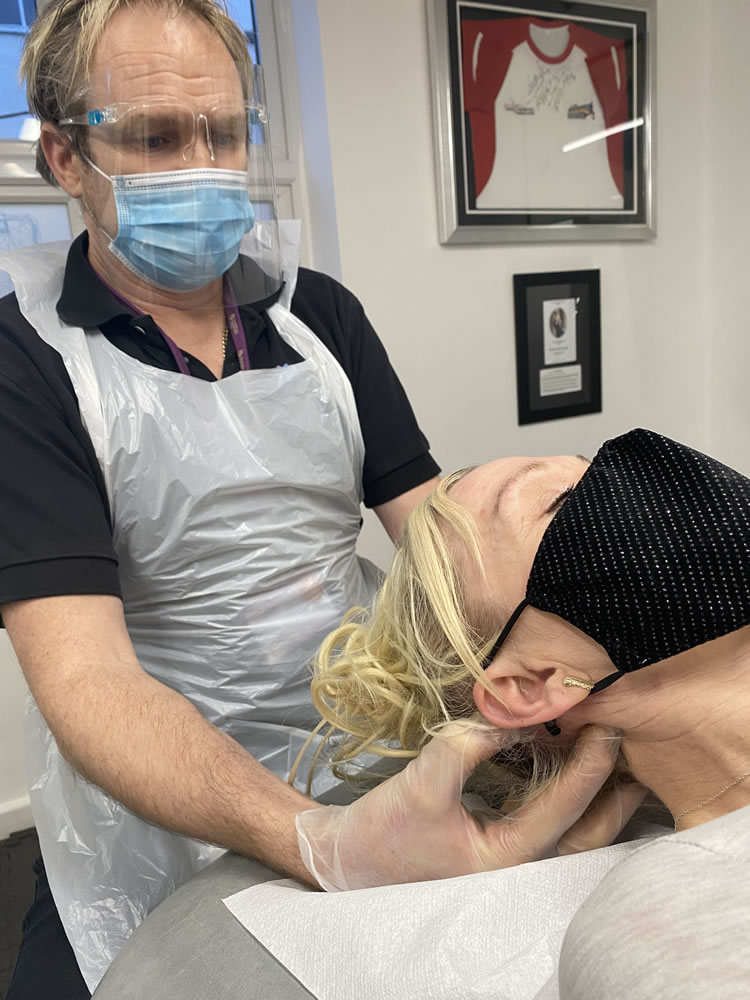
The general treatments offered by most therapists, tend to focus on managing the ‘surface’ musculoskeletal symptoms of pain, whereas the ancient CiONE Amatsu therapies, combined with BiOFascial and Postural Methodologies – will eradicate the ‘cause’ of the pain.
It is important to understand that if the ‘spasms’ are left untreated, the bodies proprioception will adapt to the deep spasm and after a period of time – the restricted ROM of the muscle becomes ‘Normalized’ pro-prioceptively.
Thus, slowly restricting – over time – the intrinsic muscle groups; which then, in turn – stop the mechanical function of the skeleton.
